
EDITOR’S NOTE: This post is part of the Expert Exchange series, an editorially directed and expert-driven platform for information and discussion around leading-edge building science principles and projects. The fourth quarter topic—made possible with support from our sponsor*, Rockwool—is “Choosing Products and Materials for a Green Home.” The series will culminate with a webinar panel discussion among contributing experts on Dec. 7 at 6pm ET. Click to register.
It should be easier to choose paint for people with chemical sensitivities, or anyone interested in designing and building a healthy home, but it is not always an easy decision to make. The most common designation of a healthy paint—VOC content—is a good place to start. Designations for low-VOC and no-VOC paints are nearly standardized at 50-100 g/l or less and 5 g/l or less, respectively, and many of today’s common latex paints meet these levels. One caveat is that VOCs are measured when paint is dry, while much of the off-gassing happens before the paint has cured. For this reason, I go beyond zero-VOCs and include the fumes and odors of wet paint in my assessments, as you will see.
Another reason it is challenging to choose the best paint for you and your project, is because it may be worth looking beyond common latex paint, but you won’t find much else on most big-box or paint store shelves. Air purifying paints, bio-based formulas, non-acrylic paints, mineral paint, and linseed-oil-based products have unique characteristics when it comes to fumes and odors; they may not use the petrochemicals found in the manufacture of most common paints; and they may not contribute to microplastic pollution, as latex paints do. Things get a bit trickier with primers and trim paint, where performance and durability are paramount, but there are options to consider. In this article, I’ll share some of what I have learned researching and experimenting with all of these paint options for a healthier home.
Common latex wall paint is a good start
Most interior paints today are water-based latex products with acrylic binders. In the last few years, most of the major paint brands have transitioned their wall paints to zero-VOC formulas. Products from Benjamin Moore, Sherwin Williams, Behr, Valspar, and their competitors that meet the zero-VOC requirements are much less harmful to humans than their predecessors (trim paint and primers are often higher in VOCs and I will talk about those later). Still, of all the paints I will be discussing, it is my experience that these acrylic paint, even no-VOC formulas emit more fumes during painting than the other paint categories I’ll discuss.
Fumes aren’t a scientific estimation of how harmful a product is (off-gassing is measurable). Fumes are the experience of unpleasant VOCs that are noticeable to people. Though there are odorless VOCs found in other consumer products that can be harmful, most VOCs in paint do emit an odor. There are also natural and non-harmful ingredients in some paints that have an odor. Along with the research that I do, the assessments that I make about products are verified by the experience of chemically sensitive folks, and I’ve learned that odor is not insignificant.
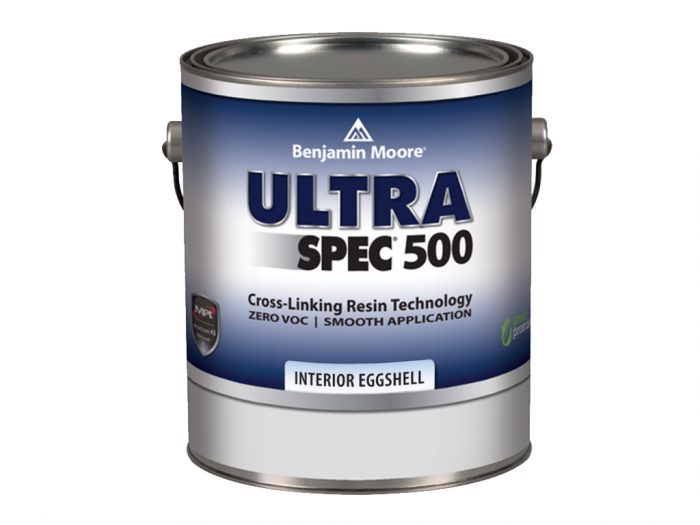 Low- and no-VOC paints are usually clearly labeled, though it can be difficult to find out much more than that about a paint. One place to look for more information is the product’s safety data sheet. There are two brands, ECOS Paints and Ben Moore Ultra Spec that provide a Declare Label from the International Living Future Institute. Declare labels disclose all intentionally-added ingredients and residuals at or above 100ppm (0.01%) present in the final product by weight.
Low- and no-VOC paints are usually clearly labeled, though it can be difficult to find out much more than that about a paint. One place to look for more information is the product’s safety data sheet. There are two brands, ECOS Paints and Ben Moore Ultra Spec that provide a Declare Label from the International Living Future Institute. Declare labels disclose all intentionally-added ingredients and residuals at or above 100ppm (0.01%) present in the final product by weight.
I support transparency in ingredients, though quality wise, Benjamin Moore’s Aura is more comparable to ECOS. Interestingly enough, these have been the two favorite brands amongst the chemically sensitive I’ve worked with. Specifically, the now discontinued Benjamin Moore Natura which is very similar to their Eco Spec in terms of odor and fumes, though Eco Spec is lower quality, according to the company. ECOS Paint is an online retailer owned by Imperial Paints LLC. The paint performs well, has good pigments, and good coverage.
It’s safe to say that common house paint has come a long way in terms of its effect on human health. It is a plastic, though, and like all latex paints, does contribute to microplastic pollution. It’s also important to know the effect a paint has on a wall’s vapor profile. Most latex acrylic paints have a perm rating that puts them squarely in class III vapor retarder territory. As you’ll soon see, you can find interior paint that is much more vapor open.
If you’re looking for the lowest cost wall paint, acrylic paints in the low-quality brands will certainly be less expensive than any other option on this list. Valspar starts at $20 per gallon. Benjamin Moore Aura is about $99 per gallon. And ECOS Paints cost between $85-$100 per gallon (depending on sheen). I generally specify ECOS Paints or Benjamin Moore when working with clients on choosing materials. I don’t think any sensitive client has ever had a reaction to ECOS.
Some paints claim to purify the air
Air purifying paint is a new type of acrylic paint that claims it can absorb VOCs in the home. The paints can contain up to 10% sorbent material, like zeolite. This certainly reduces the odor of the paint while wet. Once the paint is cured, zeolite can then release those VOCs (if the ambient levels are low enough) and reabsorb future VOCs. The two main air purifying paints on the market also claim to break down VOCs. Titanium dioxide, the white pigment and filler in all paints, can interact with UV light and produce hydroxyl radicals which break down VOCs. It’s the same process used in photocatalytic oxidation (PCO) air purifiers like Molekule.
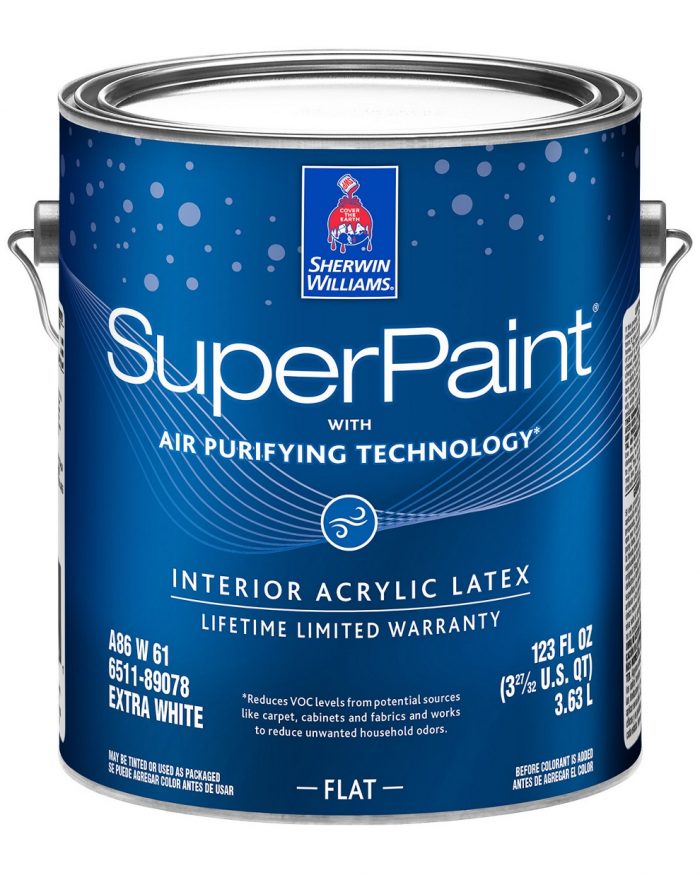 Sherwin Williams Super Paint with Air Purifying Technology is a zero-VOC acrylic paint that they claim can break down unwanted household odors and reduce VOCs in the home. Based on a patent held by the company, it could be that their air-purifying paints contain sodium bicarbonate, zeolite, activated carbon, and/or cyclodextrin as odor-absorbing agents. The patent also describes possible odor-neutralizing agents like undecylenic acid, undecylenate silicone esters, chloramine-T, and zinc ricinoleate.
Sherwin Williams Super Paint with Air Purifying Technology is a zero-VOC acrylic paint that they claim can break down unwanted household odors and reduce VOCs in the home. Based on a patent held by the company, it could be that their air-purifying paints contain sodium bicarbonate, zeolite, activated carbon, and/or cyclodextrin as odor-absorbing agents. The patent also describes possible odor-neutralizing agents like undecylenic acid, undecylenate silicone esters, chloramine-T, and zinc ricinoleate.
They mention that the paint can contain nano-titanium dioxide, zinc oxide, or anatase titanium dioxide, which are capable of degrading odors in the presence of UV light. (Note again, that the white pigment in all paint is titanium dioxide). This process can work in theory with some indirect sunlight or light through a window but this PCO process works best when the sun hits titanium dioxide directly, unobstructed, according to Dr. Steven S.C. Chuang who holds a Ph.D. in Chemical Engineering. They also list a possible fragrance added to the paint. Sherwin Williams Super Paint costs $75-$85 per gallon, depending on the sheen.
ECOS Paint also makes an Air Purifying Paint and Air Purifying Primer. They claim that the paint “absorbs and neutralizes chemicals, pollutants, and VOCs for improved indoor air quality.” They provide full transparency in ingredients. Zeolite is the odor-absorbing agent. The paint also contains titanium dioxide which could be classified as an odor-degrading agent, and vanillin, a fragrance. ECOS Air Purifying paint costs $120 per gallon.
If I had to use an acrylic paint (which is not my top choice as you will see below), and I was doing the painting myself, I would opt for the version with zeolite as it does help with fumes, especially the initial fumes encountered before the paint has cured.
Bio-based acrylic paint limits petrochemicals
Bio-based paint is another subset of acrylic paint. Bio-based acrylics uses acrylic acid made from soybean, or other oils, glycerol, corn-derived lactic acid, lignocellulose, or tree sap instead of sourcing the acrylic acid from petrochemicals. Soybean oil is commonly used because it is low-cost and highly available says the North Dakota State University Research Foundation in their patent on bio-based acrylic.
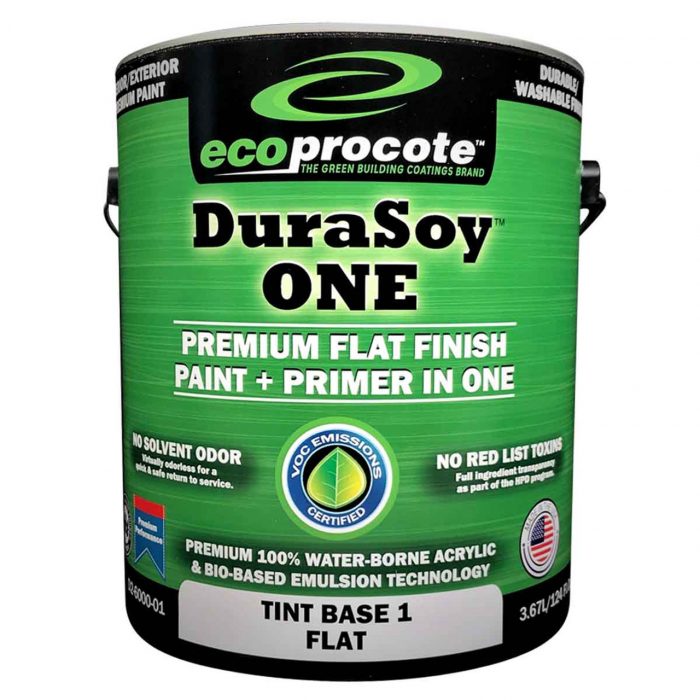
Dura Soy by Eco Safety Products claims it’s a partial bio-based acrylic made from waste soy oils and/or waste tree saps. They say it has around 10% bio-based content. Dura Soy costs between $42-$59 per gallon. Green Planet Paints lists the polymers in their Agri Paint as bio acrylic (based on waste soy ester oil and waste tree saps) and a polymer made from post-cosumer recycled acrylics. They claim it has 40% biobased content. AgriPaint costs $65 per gallon.
Odor- and VOC-wise, Agri Paint doesn’t seem different than a regular zero-VOC paint. The reasons to go with one of these brands would be to limit petrochemicals or to add more recycled materials. If your main motivation is the environmental impact of paint this is certainly an option to consider. Bio-acrylic paints are not always compatible with existing synthetic paints. Be sure to ask the companies first. Agri Paint was not compatible with some existing coatings in the past, but they have been reformulated to not have that problem. If you are unsure, you may need to contact the manufacturer to determine how to proceed with repainting.
Non-acrylic latex is low-odor
Farrow and Ball is my favorite latex paint brand (photo at top of page). One reason is because some of their sheens are free of acrylics and have much lower fumes when wet than any other latex paint I have tested. If you are interested in trying an acrylic-free formula, try one of these Farrow and Ball sheens: Estate Emulsion, Estate Eggshell, Full Gloss, or Dead Flat. The main binder in this paint is a vinyl acetate/ethylene copolymer (VAE) which is what makes this so much lower in odor when wet compared to acrylic paints, even though the official VOC count comes in a few g/l over zero. The Modern Emulsion and Modern Eggshell sheens, as well as their exterior paints do contain acrylic polymer binders. Though Farrow and Ball give perm ratings in European units, the company told me that it is a high-perm paint. The Estate Emulsion and Estate Eggshell sheens, for example, would convert to approximately 25 Perms.
This is a paint that could very well be sold as eco-friendly, non-toxic, and safe for the chemically sensitive. But this aspect has flown under the radar because it’s not marketed that way. Farrow and Ball is much more known for their beautiful color scheme. At $120-$130 per gallon (depending on sheen), they are an expensive paint.
Mineral paints are durable, even in low sheens
“Mineral paint” is a term that is often used incorrectly. Calling any paint a mineral paint because it contains minerals is marketing lingo. All paints use minerals as the filler and thickener. Technically, the term “mineral paint” refers to paints with a silicate binder (potassium silicate or silica sol). These mineral binders are odorless.
Silicate technology works great on masonry because there is a silicification of the binder with the substrate—the binder reacts with the mineral substrate creating a bond between the paint and the render, stone, concrete, or brick. But new formulas can be used on drywall.
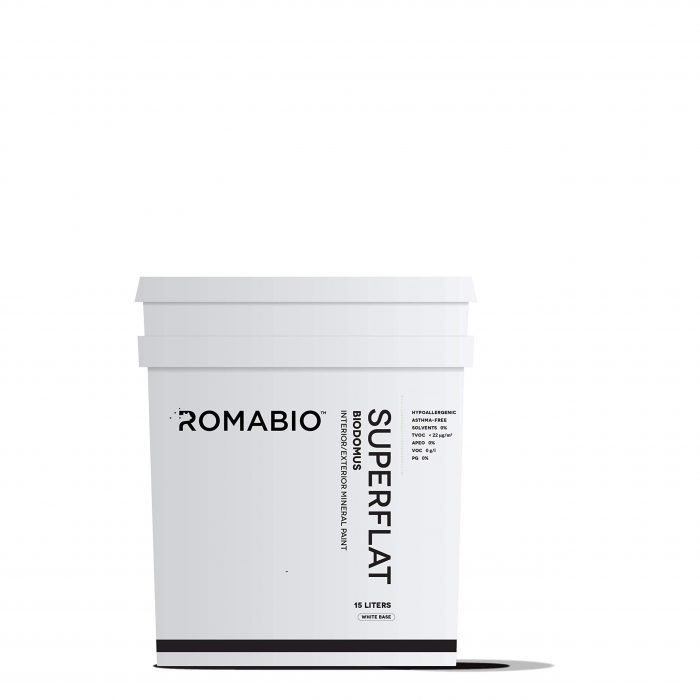 I have used Romabio EcoDomus and Kiem Interior Mineral Wall Paint (called Innostar in Europe) which are two of the most accessible mineral paints in North America. They both are formulated for interior drywall as well as masonry. Romabio costs $70 for 2.5 liters (0.66 of a gallon) and Kiem costs $88 per gallon.
I have used Romabio EcoDomus and Kiem Interior Mineral Wall Paint (called Innostar in Europe) which are two of the most accessible mineral paints in North America. They both are formulated for interior drywall as well as masonry. Romabio costs $70 for 2.5 liters (0.66 of a gallon) and Kiem costs $88 per gallon.
Romabio paint includes other binders apart from silicates—ethylene vinyl acetate polymer and one undisclosed binder (and it is more similar in odor to a regular acrylic paint, though they claim no acrylic binders). Kiem does have some acrylic binder. A rep from Kiem explained that a pure silicate premixed paint is not possible. They offer pure mineral silicate paints for the professional trades that are supplied as a two-part paint—a pigment powder and pure mineral silicate binder. But no homeowner could apply this type of paint, they said, as it is extremely temperamental and difficult to apply.
Kiem is one of my favorite paints on the list because it’s as close to odorless when wet as a paint can get. The only downside to this paint is that it has more limited colors than other brands. Kiem is listed as zero-VOC and it’s for use on new or previously painted drywall, plaster, brick, stone, concrete, or stucco (not for use on bare wood, plastic, wood trim, doors, windows, or floors). It’s self-priming on both bare and previously painted surfaces. If you are interested in plastic reduction, Kiem is a good choice in that regard too.
Mineral paints typically don’t need a primer, and also don’t require many coats to cover, another point in their favor. Both of these products have high perm ratings. Kiem has a perm rating of 77. Romabio comes in between 20 and 65, depending on the sheen. This may be advantageous if you are looking for a vapor open wall assembly. And these paints are the best option if you want a very flat finish that is also washable, a combo that’s difficult to achieve with other paint types.
Linseed oil paint penetrates
Linseed oil paint is an all-natural paint. The main ingredients in Allbäck Linseed Oil Paint, for example, are boiled linseed oil and pigments made from titanium oxide, iron oxides, chromium oxide green, and ultramarine blue. The drying agent is manganese. There is no solvent in either the Allbäck and Earth+Flax brands.
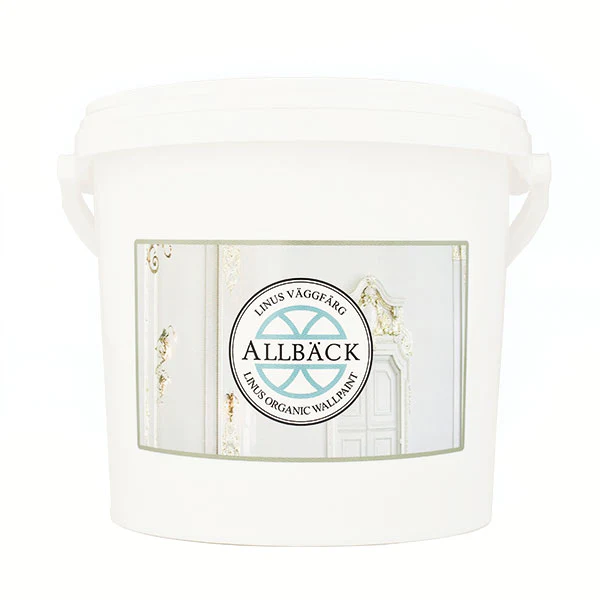 Linseed oil paint is a penetrating paint on porous surfaces, so it doesn’t crack or peel. You can use it on wood, concrete, sheet metal, iron, plastic, wallpaper, and more. It bonds to just about any surface other than silicone. Because of its ability to bond to such a wide range of surfaces, it can be used on cabinets, even over melamine plastic, and on window frames (both plastic and metal). You can use this on drywall (with the right application), or you can use a more modified Allbäck Linus Wall Paint formula which is made from linseed oil, water, cellulose, shellac, beeswax, and natural pigments (note that shellac lowers permeability).
Linseed oil paint is a penetrating paint on porous surfaces, so it doesn’t crack or peel. You can use it on wood, concrete, sheet metal, iron, plastic, wallpaper, and more. It bonds to just about any surface other than silicone. Because of its ability to bond to such a wide range of surfaces, it can be used on cabinets, even over melamine plastic, and on window frames (both plastic and metal). You can use this on drywall (with the right application), or you can use a more modified Allbäck Linus Wall Paint formula which is made from linseed oil, water, cellulose, shellac, beeswax, and natural pigments (note that shellac lowers permeability).
The main downside of linseed oil paint on drywall is that that you cannot easily repaint the wall with a water-based product in the future without careful preparation and priming. Otherwise, the finish is quite durable and very flat. I tested the Allbäck and Earth+Flax brands. They do have the natural odor of linseed oil which may bother some people, but overall, it’s mild. The other drawback for me was how sensitive to temperature and humidity these paints were compared to conventional options. They simply will not cure if you are not within the temperature and humidity range required.
Linseed oil paint would be my choice for painting difficult surfaces, like window frames, or cabinets, or for painting over oil-based paint, as long as the flat look was in line with the design, and my humidity and temperature were controllable. It’s also great for clients who want to go all-natural, completely avoid petrochemicals, and avoiding contributing to plastic pollution. And it is another high-perm paint, if that is needed. Allbäck costs $63 per liter (0.26 of a gallon).
Options for healthier primer and trim paint
In the last few years, we have seen companies transition some of their primers to zero-VOC formulas along with their paint lines. Sherwin Williams has the widest selection of zero-VOC drywall primers of the major acrylic paint lines with four options. Benjamin Moore only has one zero-VOC primer (Ultraspec 500), Behr has only one (Kitchen, Bath & Trim Interior Stain-Blocking Primer), and Valspar has only one (Multi-Surface Primer).
Farrow and Ball’s primers like their paint are ultra-low odor and just about zero-VOC. I have tested their wood primer but all of their other primers are very low in VOCs as well. If going with a conventional in-store paint brand, Farrow and Ball or Sherwin Williams would be the ones I would choose for the best selection in low- and zero-VOC options.
ECOS Paint, the online paint brand, really shines when it comes to primers as all of their products are zero-VOC including their Stain Blocking Primer and Universal Primer. The Universal Primer has the strongest bonding power and can go over some vinyl, has stain-blocking abilities, and can transition an oil-based paint to water-based. They also have a regular Drywall Primer and Air Purifying Primer, which like their Air Purifying Paint discussed above, contains zeolite to absorb VOCs.
Like common latex paints, primers range widely in price. Here are a number of equivalent drywall primers that range from under $20 to over $80: Valspar Multi-Surface Primer costs $18 per gallon; Behr Drywall Plus (low VOC) costs $23 per gallon; Benjamin Moore Ultraspec 500 Primer costs $30 per gallon; Sherwin Williams Drywall Primer costs $33 per gallon; ECOS Drywall Primer costs $67 per gallon; and Farrow and Ball Wall & Ceiling Primer & Undercoat costs $84 per gallon.
As for trim paint, the movement to create lower-VOC paints has led to the creation of water-based alkyd paints which can substitute for conventional oil-based paints that are high in solvents and VOCs. The new water-based alkyd paints are low-VOC formulas that offer the enameled look of traditional trim paint. These paints minimize surface imperfections and hold up well in high-traffic areas. They are tougher than your usual latex wall paint.
Sherwin-Williams ProClassic Alkyd Enamel is a popular paint for interior trim, molding, and doors. It’s also a good choice for cabinets and windows. It’s a low-VOC formula that some sensitive folks have reported doing well with.
Benjamin Moore Advance is another well-known brand. I have used this one myself and I did find it quite fast to off-gas and very low in odor once dry. I did have trouble applying it with a brush, which is something I have heard from others as well. Perhaps our techniques are off, but it might just be better spray-applied.
For most people, water-based alkyd paints would be low enough in VOCs, but for very sensitive clients or someone that wants to go the more natural route, you can use the linseed oil-based paint discussed above on trim. It’s durable, though it has a flat appearance. That would be the all-natural option. You can also use a regular acrylic paint in semi-gloss on trim which is what the most chemically sensitive people usually do, though it’s not as durable as the other two options.
A good acrylic enamel can be pricey. Benjamin Moore Advance costs $75 per gallon; ECOS Semi Gloss costs $100 per gallon. Sherwin-Williams ProClassic Alkyd Enamel costs $103 per gallon; and Allbäck Linseed Oil Paint costs $63 per liter (0.26 of a gallon).
Final thoughts
As I mentioned earlier, the comments in this article come from my research, testing, and experience with the products I have discussed. Paints off-gas on an exponential curve. Fumes are more severe when the paint is wet than they are once it has cured. One option for sensitive people is to be out of the house when paint is being applied, maybe even until the new pain smell has diminished. If that’s not an option, or if you plan to paint yourself, consider using a product that emits less fumes and odor when it is wet and take all of the precautions necessary for working with potentially harmful materials, including proper ventilation. In the end, if I’m choosing wall paint, and doing the painting myself, Kiem and Farrow and Ball are the two paints that I would choose, for many of the reasons mentioned above.
*Sponsors are not offered the opportunity to review articles before publication or to edit our authors’ words.
Corinne Segura is a green building materials specifier and writer at mychemicalfreehouse.net. Photos courtesy of manufacturers.
Weekly Newsletter
Get building science and energy efficiency advice, plus special offers, in your inbox.


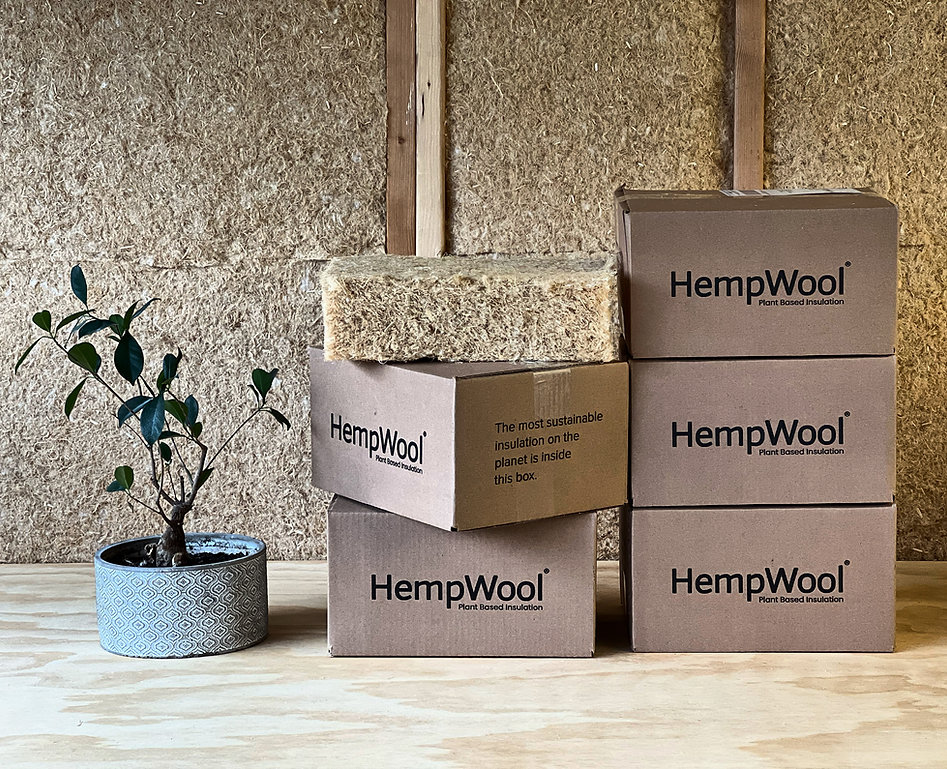
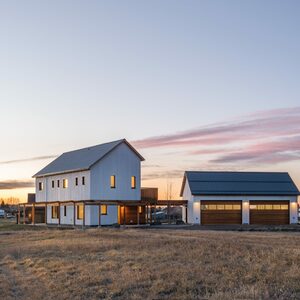
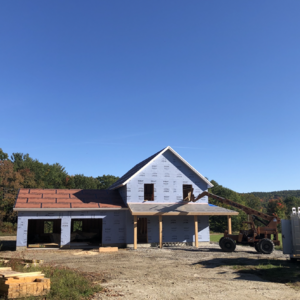









10 Comments
Best information I've read on ch00sing Lo-Voc, environmentally friendly paint.
Thank you.
Yes. Good stuff!
Does anyone have comparative info on non-paint wall finish options? I've heard that if you do something like a gypsum veneer plaster system, you can tint the veneer coat with regular paint pigments and not need to paint the surface. I've also ran across companies like American Clay that make earthen plaster veneer coats that can be tinted (though their system needs a regular acrylic primer with sand mixed in, there might be others that go directly on drywall). Anyone have experience with these?
Also, if you're painting and the paint is even a bit smelly, a decent half-face respirator with cartridges will cost less than a gallon of many of these paints and will completely eliminate the odor. Just consider it part of the necessary tools & equipment for painting!
My father in law is a painter, and when we redid the bedroom he recommended Farrow and Ball. Benjamin Moore is his go to, but the color wasn’t quite right.
The FandB paint has absolutely amazing color. It feels deeper, if that makes any sense. It’s nice to know there’s other things to like about it. The cost is high, but the colors really are worth the money.
Good info. Glad to read some content on permeability as this has puzzled me for a while. We spend a lot of time making our wall assemblies breathable, and then use an elastomeric paint that seals moisture in. What is the sweet spot for permeability in paint? Are mineral paints or linseed oil paints the only options?
user ...934,
I guess it depends on how the walls are designed to dry. In many climates the most common strategy is to design them to dry to the exterior, and they benefit from an interior vapor-retarder.
Two coats of latex paint on drywall are about 5 perms.
in terms of breathable paints, kiem and romabio for mineral paints, farrow and ball for latex. Those three are all quite conventional in how they apply. Less conventional paints that are breathable include linseed oil paint, Biosheild "clay paint" (also great for the chemically sensitive but a little trickier to apply and the binder is not disclosed so it's hard to categorise it fully), chalk paint and milk paint are also breathable and could be used on walls, though they both require a sealer and milk paint is best on wood and tricky to impossible on drywall in my experiments.
There is also paper based wallpaper and plaster of course.
Thanks for the reply, Corinne, but which of those paints are suitable for exterior?
it depends on the substrate, kiem and romabio make exterior formulas, farrow and ball makes an exterior paint but that has acrylic in it and is less permeable. Linseed oil paint can definitely be used on the exterior if your humidity and temperatures allow it enough time to polymerise, even milk paint can be used on some exterior pieces as long as you coat over with something like tung oil.
I know this is a bit pedantic, but it's also important. Referring to building assemblies "breathing", or materials being "breathable", just causes confusion. Breathing is associated with the movement of air, not water vapor. It's best to stick to "permeance" or them being "vapor-open".
https://www.greenbuildingadvisor.com/article/buildings-dont-need-to-breathe
https://www.greenbuildingadvisor.com/article/walls-need-to-breathe-and-9-other-green-building-myths
Log in or create an account to post a comment.
Sign up Log in